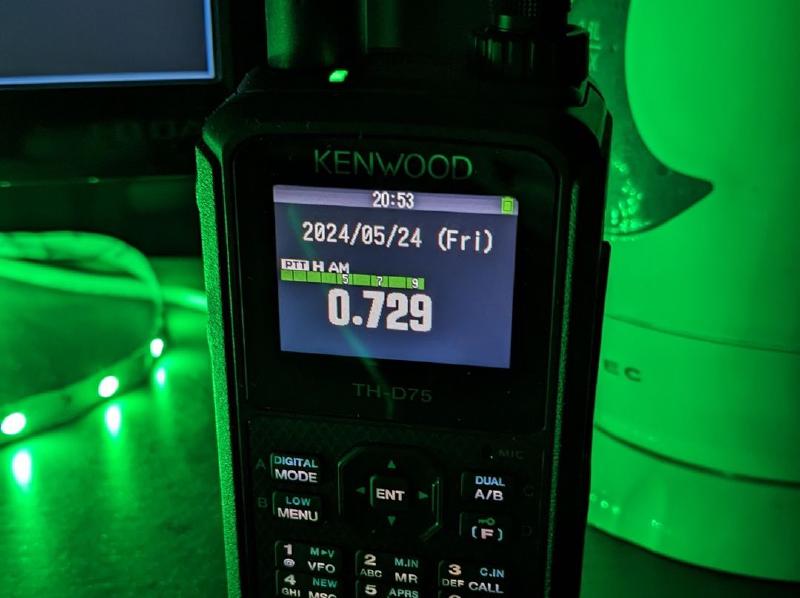What’s this about?
Colleagues asked: “Hey Chris, so what’s actually in that mobile HAM radio device, what do you get for 550EUR?” - I’ll sum that up here. I’m coming back to the hobby after 20 years, so also discovering what’s possible now. 20 years ago, I used CB-radio. After getting HAM radio licensed here in Japan, I got a decent HAM radio transmitter for hand held use, a Kenwood TH-D75. The article is not specific for the TH-D75 though, the features are also in other modern devices.
Let’s have a look!
Plain listening
Everybody knows ‘world receivers’: these are a kind of radio, covering many bands of the frequency spectrum. When using these, you first select a ‘band’ (the rough category of the frequency spectrum), and then fine tune the frequency you want to receive with a knob or control dial. The TH-D75 can do the same, but extended: instead of single bands, you can choose the frequency freely between 0.1Mhz and 524Mhz - that’s much more than world-radios.
The voice, music or data are ’encoded’ into the radio wave, the way of encoding is called modulation. For successful transmission of voice or data, sender and transceiver have to be configured with the same modulation. The world receiver knows AM (Amplitude Modulation) or FM (Frequency Modulation). The TH-D75 allows additional simple modulations: SSB (single-sideband), CW (‘morse code’).
A further difference: world receivers are listening “in one place”, so on one frequency. The TH-D75 can operate “in two places”: so you can for example constantly listen on one frequency (for example as you know someone will reach out to you there), while at the same time scanning other frequencies. Or, you could listen to UKW radio of your home area, while also monitoring a second frequency as you expect someone to reach out to you on that frequency. Basically 2 radios in one!
Sending
The TH-D75 can also send, so you can communicate with others. The antenna and electronics of the device are optimized for certain select frequencies. 3 models of the TH-D75 exist: the models for Japan and Europe are 2-band-transceivers, they can send on the 70cm and 2m wavelength bands. The American model has an additional band. I graphed the areas of the three models here:
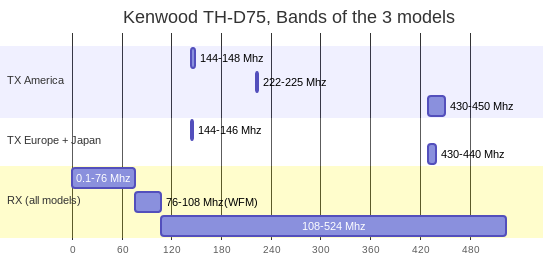
These differences are born in how these areas assigned frequencies, and has some funny implications: as these radio transceivers can send signal, they have the potential to interfere with all kinds of communications i.e. of police, firefighters and so on. Thus, the devices need to pass technical certifications for the country where they get used (and additionally one needs a HAM radio license). The frequency differences lead to for example the American model not being licensed in Japan, so you can also not easily buy the device in Japan when on holiday, and then use it in Europe. With that, also differences in pricing are possible, and exactly that can be seen for the TH-D75: I payed in Japan 89760円(~530EUR), while the European model is sold for 879EUR.
The difference in price makes sense though: Japan has seen much less inflation in the last years than Europe or even America, also wages are lower here than in Europe. JVC/Kenwood, the company producing the device is based in Japan.
How easy are receiving/sending/scan?
Plain receiving and sending in AM/FM/SSB is a basic functionality, how hard is it to use? Without reading the manual, I managed to switch between the AM/FM/SSB modes, and change the frequency. Frequency change can be done simply with one of the 2 dials on the device - but I would always stay within a quite narrow frequency area. So one can not simply ‘dial’ trough all frequencies between 0 and 500Mhz. That huge range is divided into ‘bands’, and already switching these needed the manual. Also ‘scans’ are important: having the TH-D75 change probe frequencies, until a signal (i.e. a radio station) is found.
The third important function is ‘squelch’, so “which signal level needs to be found on the frequency to have the scan recognize it as ‘signal’”. Also for this I needed the manual.
Digital modes
AM, FM, SSB are mostly used to transport voice, are a long time around, can also since more than 100 years ago be implemented with normal electronic circuits. Mode “CW” is a bit special: it’s also known as “morse code”, so requires more skills for sending/listening, but can still be used under conditions when the other modes like SSB are no longer possible.
Modern transceivers also cover digital modes, the TH-D75 can transmit with D-STAR. That’s a digital mode, so for example voice gets first digitalized and then modulated onto radio waves. Such transmissions can be used under conditions when i.e. SSB is no longer possible. This also allows usage of “digital repeaters”: if 2 stations can not reach each other directly, you can setup a “repeater” in the middle, i.e. on a mountain. As long as both stations independently reach the repeater, indirect communication is then possible.
I just received my HAM radio handle for use in Japan, and have now started registration for D-STAR.
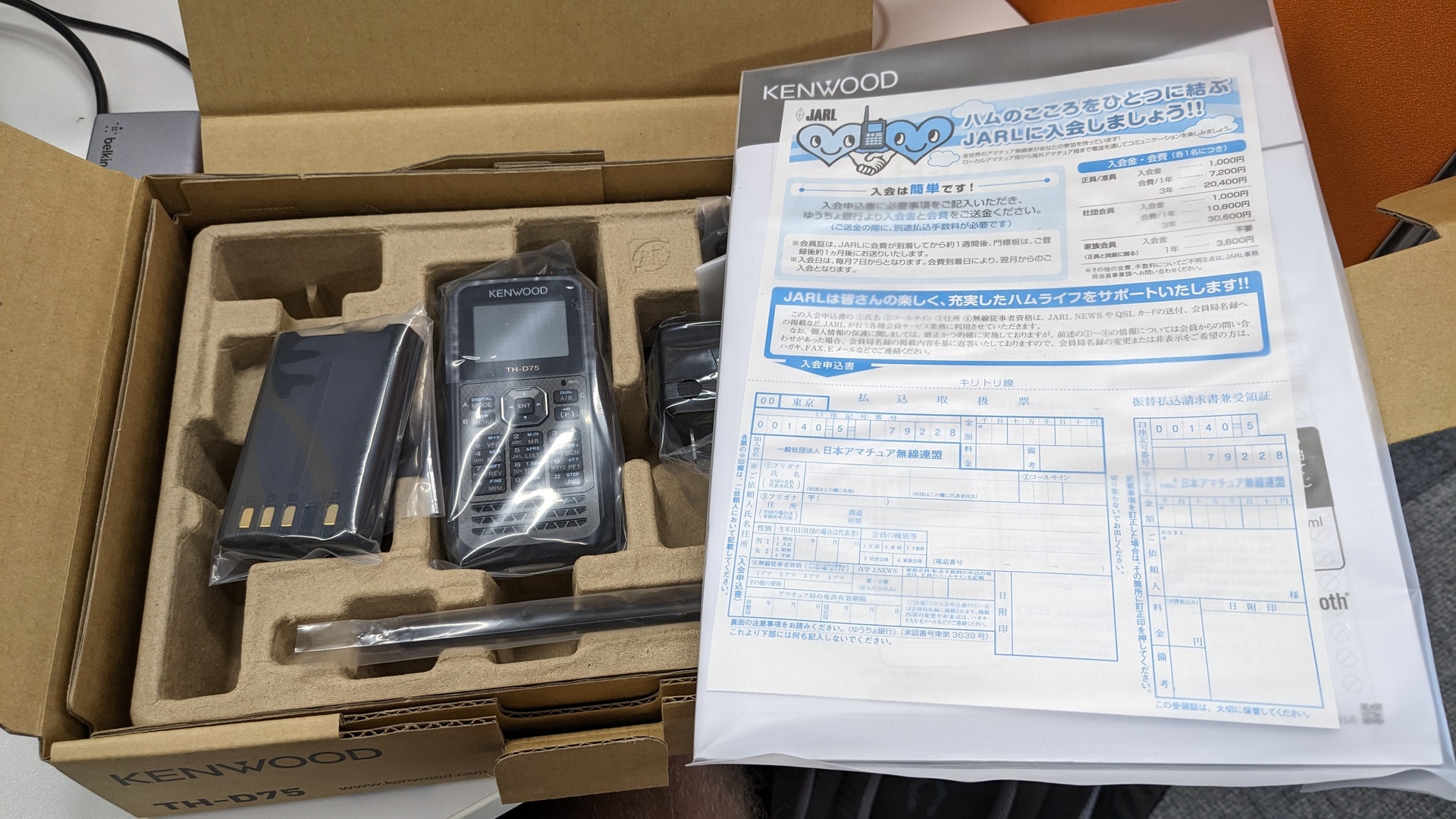
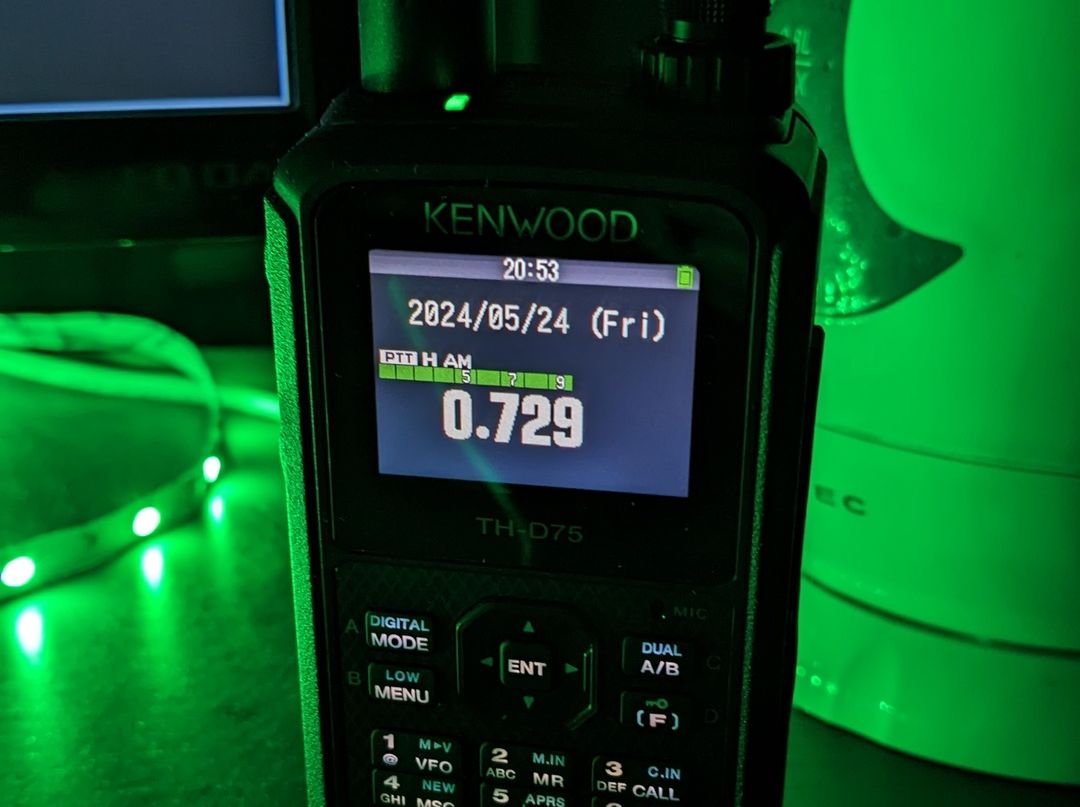
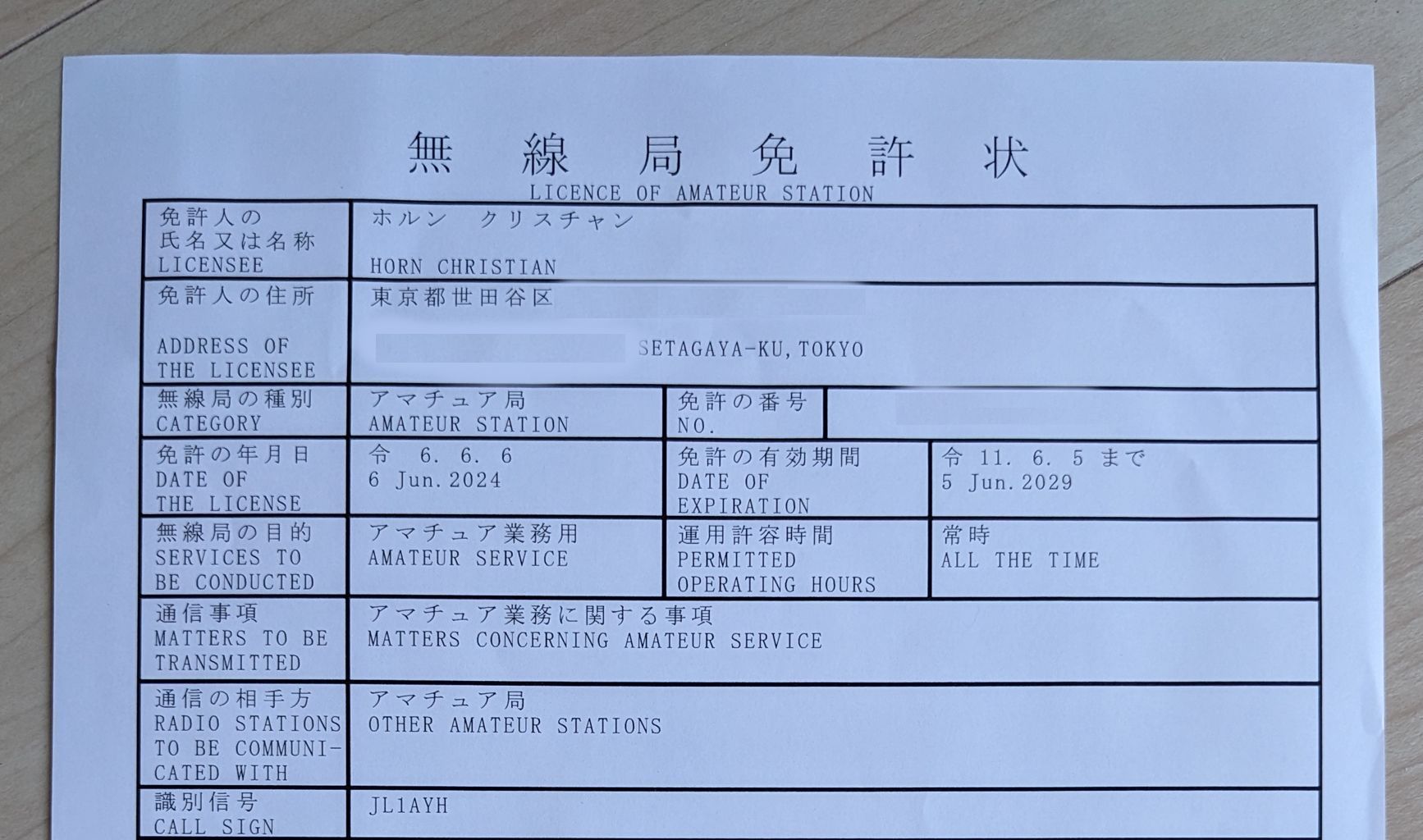
APRS
The TH-D75 speaks APRS (Automatic Packet Reporting System), a system for exchanging location information. As the TH-D75 has also GPS, you can use APRS to constantly send out your location. Moving with a bike, someone can remotely track your location on a map. You can select a frequency for D-STAR communication, and then via APRS send out your current location + details of the frequency where you are reachable via D-STAR.
Repeaters can also be used with APRS, so you can not only exchange APRS data with stations within direct reachability, but extend that with repeaters. The transmissions are not limited to one single repeater, forming a mesh network. Also the TH-D75 itself can be used as repeater.
APRS is widely used: you can setup a device to just receive, and then catch APRS broadcasts from nearby airplanes, informing about their position and flight number.
Network/Packet radio
The TH-D75 can also be connected to a computer via USB-C, and be used for network communication. The KISS protocol gets used to communicate with the TH-D75, typical speeds are 1200 or 9600bps (baud per second). 20 years ago, when I used ‘packet radio’ in Germany on the license free citizens band, 1200 or 2400bps were used.
Not yet sure if I have nearby stations - the speed would be good to run BBS :)
Further..
The TH-D75 also has Bluetooth, supporting HSP profile (i.e. to connect headsets) or SPP (Serial Port Profile) to exchange data with PCs.
The SD-card slot is used
- for audio recording
- logs of GPS coordinates
- lists of repeaters, and more.
Direct output of received signals via USB-C is also possible, for processing/analyzing them with software.
Questions? Comments? -> Mastodon thread
Related:
